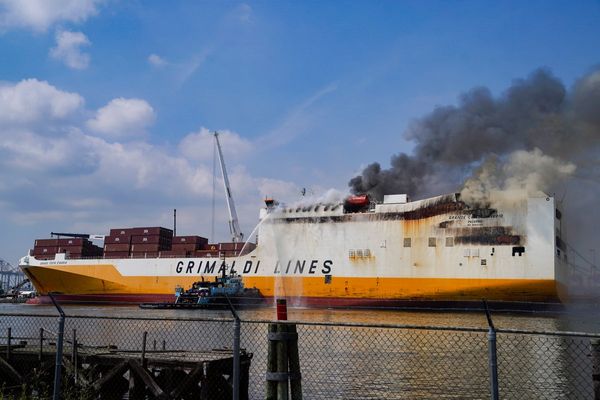POLICE have issued an “avoid the area” warning for a popular Scottish island hiking route after a wildfire started in the area.
The fire is currently burning in the Glen Rosa area of Arran, meaning that access to Goatfell – the island’s highest peak – is currently blocked.
Police urged members of the public to “avoid the area and stay away from the footpaths into Glen Rosa, Goatfell and Glen Sannox”.
Officers said they were first made aware of the blaze around 1pm on Thursday, April 10, and on Friday morning confirmed that the Scottish Fire and Rescue Service (SFRS) remains in attendance.

There are two further fires burning Fairlie Castle in Ayrshire and another near Fannyside Road in Cumbernauld, North Lanarkshire.
In Cumbernauld, Fannyside Road has been closed between Forest Road and the B803 Greengairs Road due to the nearby blaze.
Police Scotland said it was made aware of the fire around 9.40pm on Thursday, that fire services are still on the scene, and that members of the public are advised to avoid the area.
"Residents in the Abronhill area of Cumbernauld and Bonnybridge are advised to keep their windows and doors closed due to smoke in the area," the force said.
On Thursday, the SFRS said that four appliances had been sent to deal with grass on fire near John Kennedy Drive in Thurso.
“Due to heavy smoke in the area, members of the public are asked to keep their windows and doors shut”, the force added.
And a helicopter was deployed to tack a blaze on the Isle of Bute, with images captured by Getty.


He went on: “Some people may think it's unusual to have wildfires and warnings out at this time of year, but what our data shows us over the last 10 years is that we see the largest number of wildfires between the months of March and June every year.”
Humphreys added that “after the winter period we can have much more large amounts of dry vegetation on the ground and with the right weather conditions that vegetation can dry out.
“So that's your fuel – and the more fuel, the more intense fire can be.”
He warned that, although wildfires can start naturally, the majority are due to “some sort of human behaviour”. As such, Humphreys urged people to reconsider having a BBQ, to make sure any cigarettes are properly put out, and to call the SFRS “immediately” if any fires are seen.







